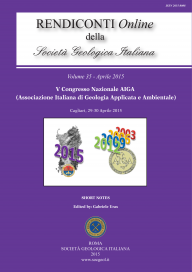
At which time step do we need to monitor the stream hydro-chemistry properties for low flow characterization?
Antonia Longobardi (a), Domenico Guida (a), Albina Cuomo (a) & Paolo Villani (a,b)
(a) Department of Civil Engineering , University of Salerno, Via Giovanni Paolo II, 132, 84084, Fisciano, Italy. Corresponding author E-mail: alongobardi@unisa.it
(b) C.U.GR.I (University Centre for Research on Major Hazards) – Via Giovanni Paolo II, 132, 84084, Fisciano, Italy.
Volume: 35/2015
Pages: 188-191
Abstract
The low flow regime features are frequently described in terms of global indices and, among these, the most relevant are the baseflow index and the flow duration curve. Low flow indices have to be computed from observed streamflow data, but monitoring campaigns are time and cost consuming activities. The aim of the present study is then to identify the impact of the monitoring time step resolution, with particular reference to the low flow regime. To the scope, the hydro-chemographical dataset recorded, during a two year monitoring campaign, at the T. Ciciriello experimental catchment, a 3km2 watershed located in the Cilento, European and Global Geopark (Southern Italy), have been analyzed. Water depth (D), discharge (Q), electrical conductivity (EC) and rainfall time series are available. Assuming the daily time scale as the baseline, a fictitious monitoring experiment has been performed, sampling the observed daily time series at different multiple-day time steps. Main global statistic are computed for the different fictitious series and compared to the daily series. The baseflow patterns, filtered with the use of a mass balance method, appear statistically similar and the differences in terms of low flow indices fall within a 10% range.
Keywords
Get Full Text